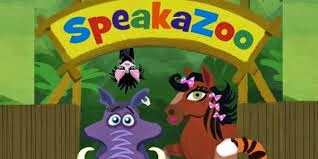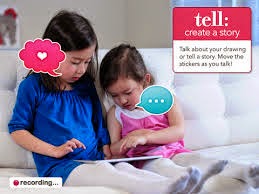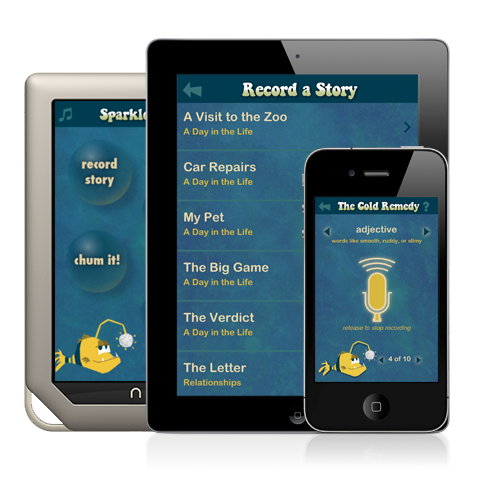 SpeakaZoo is a free app where the child is a zoo keeper who goes from animal to animal having
SpeakaZoo is a free app where the child is a zoo keeper who goes from animal to animal having conversations. The characters are fun even for older kids and after the animal talks to you there is unlimited time to formulate an answer, hold down the microphone key and reply. A great way to work on conversational turn taking, problem solving, answering questions and even some social skills.
Don't Let the Pigeon Run this App is a $4.99 app which is a take off of the Mo Willems book series. What is great about this app for AAC users is that you record your "voice" as part of writing the story and then you hear it read back.
 Draw and Tell is a $1.99 drawing and painting app by Duck Duck Moose that adds a whole new aspect -
Draw and Tell is a $1.99 drawing and painting app by Duck Duck Moose that adds a whole new aspect - recording a message to go with your drawing. Perhaps more fun is your student adding stickers and drawing on photographs (or your student directing you to add stickers and drawings to photos) and then recording a message to go with the embellished photo.
Tell About This come in a free and paid version for $2.99 which is well worth the money. The app simply shows a photograph and asks a question about it. The question is read aloud with highlighting. Your student records an answer which can be saved and shared. Even cooler you can add your own photos with your own prompts. So fun to take pictures of common routines or unique evens and ask students to create messages on their devices to tell about them.
 Sparklefish is a MadLibs style app that uses an audio recording of the words you chose instead of just typing
Sparklefish is a MadLibs style app that uses an audio recording of the words you chose instead of just typingthem in. Your recorded word is then inserted into the story. Great for working on parts of speech or working in groups.
Chatterpix Kids, Chatterpix and Facetalk are all free apps with add an animated mouth which speaks your student's recorded audio to photographs.








